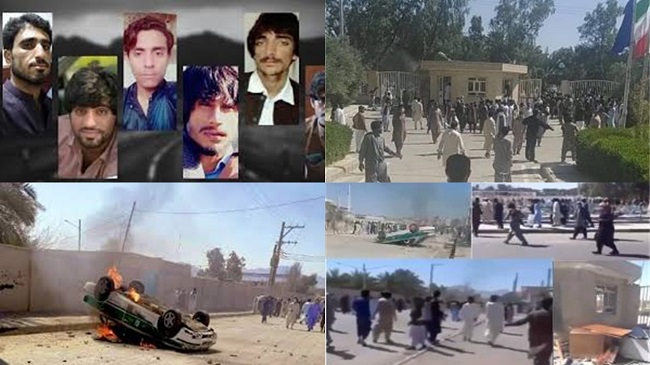Sistan and Baluchestan province in Iran has been in chaos since Monday, February 22, when the Revolutionary Guards (IRGC) killed several fuel porters after attempting to stop them crossing the border near Saravan.
The IRGC dug huge pits to stop the impoverished porters reaching the border, where they could sell the small amount of fuel they were carrying. Then, when the porters protested, the IRGC opened fire on them, killing at least nine and injuring dozens.
Protests grew on Tuesday, with Saravan residents closing their shops to take part in protests over the extrajudicial killings of their neighbors. This continued despite the heavy presence of IRGC forces and the people actually managed to surround the governorate building.
The IRGC used tear gas and live ammunition to disperse protesters, with at least 40 dead and 100 injured, but the protesters held their ground and actually managed to take the building, along with setting fire to security vehicles and blocking the roads to an IRGC base. Clashes continued as the protests spread to other areas in Sistan and Baluchistan, like Bam Posht, despite the regime shutting off the internet in order to prevent news of the protests from spreading and the people from organizing.
The regime claimed that shooting the fuel porters reduces fuel smuggling, but the Iranian resistance disputes this, citing that porters are only moving small amounts of fuel and only because they are poverty-stricken. In fact, they say, the regime and IRGC run a massive smuggling racket that is destroying the economy.
This is yet another example of the regime’s failure to deal with a crisis and, actually, make it worse. Not only are they hurting the economy but enraging the people, which is not advisable given how volatile they already are. This can be seen in the 2017, 2018, 2019, and 2020 uprisings, as well as their feelings on the regime’s mishandling of the pandemic.
Further repression will not help the regime keep control, but only make the people angrier. Even the state-run Etemad daily warned of this in an article of Tuesday, saying the people “will always stand up against tyranny”.
The Iranian Resistance wrote: “The people of Saravan showed that they know that the only way they can achieve freedom is in fact by standing up against this repressive regime. The Saravan uprising is not an isolated event. It is the manifestation of the state of Iran’s society, which is fed up from 42 years of tyranny and corruption.”
